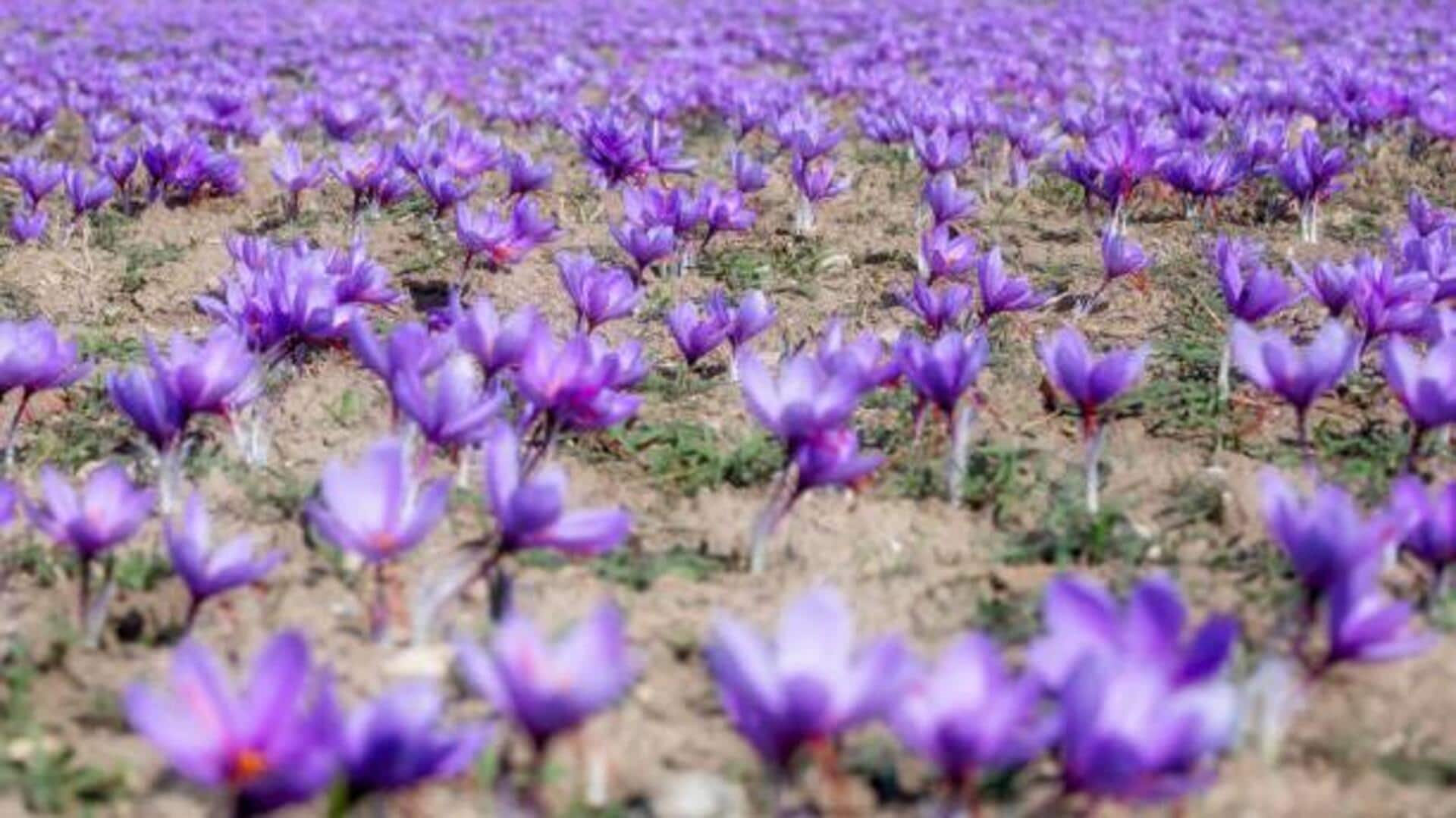
Here's what makes the Himalayan saffron harvest trek special
What's the story
The saffron harvest trek through the Himalayas is more than just a hike - it's a journey into the heart of the world's most expensive spice. This unique adventure takes you along the same routes used by saffron cultivators for centuries, offering a glimpse into a world where time seems to stand still.
Spice villages
Discovering the spice villages
The trail takes explorers through isolated villages, including Pampore and Kishtwar - the undisputed saffron kings of India. These regions are defined by their mesmerizing landscapes of purple Crocus sativus fields, the source of this precious spice. Travelers have the opportunity to meet the farmers behind this painstaking craft, offering a glimpse into the world of saffron farming, where picking thousands of flowers by hand is a daily reality.
Harvest season
The best time to visit
The best time to embark on this trek is in October and November, which coincides with the saffron harvest season. During this period, visitors have the opportunity to observe the whole process, from plucking flowers at daybreak to the meticulous hand-separation of the precious saffron stigmas. Additionally, the cool autumn climate offers ideal trekking conditions, with clear skies and pleasant temperatures.
Local culture
Cultural immersion and festivals
Joining a saffron harvest trek isn't just about observing farming techniques; it's a dive into the heart of local culture. Many villages welcome the harvest with vibrant festivals featuring traditional music, dance, and delectable food. These celebrations provide a glimpse into the soul of community life and a chance to experience the warmth of Himalayan hospitality.
Eco-friendly practices
Sustainable travel tips
Travelers are urged to adhere to responsible and sustainable practices during their trek. This entails reducing plastic waste by bringing reusable water bottles and bags, showing respect for local customs and traditions, sticking to designated trails to prevent damage to crocus fields, and contributing to local economies by buying genuine handicrafts directly from local craftspeople.
Gear up
Packing essentials for your trek
For those embarking on this adventure, packing light but smart is crucial. Key items include sturdy and comfortable hiking boots or shoes with good grip for navigating uneven terrains; layers of clothing that can be added or removed as temperatures fluctuate; sunscreen; hats; sunglasses to shield against UV radiation; and cameras or binoculars for photographing breathtaking landscapes or observing rare bird species indigenous to the area.